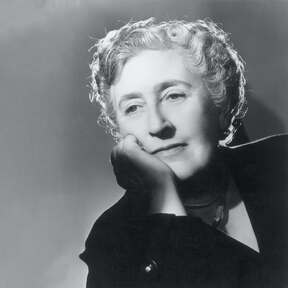On Marple and Poirot - Kathryn Hughes in TLS:
‘In the nearly 100 years that have passed since then, the mystery of Christie’s missing eleven days has been endlessly analysed. It has been interpreted as everything from a cunning plan on the author’s part to possibly murder her husband’s mistress (as in Agatha, starring Vanessa Redgrave, 1979) to the simpler though highly manipulative desire to shock her husband into coming back to her (see Duchess of Death by Richard Hack, 2009). The press at the time, perhaps reluctant to probe the matrimonial matters of a distinguished First World War veteran such as Colonel Archibald Christie, preferred to see it as a cynical plot by his floozy wife to boost her sales: The Murder of Roger Ackroyd, a masterpiece that had played fast and loose with the conventions of detective fiction, had been published a few months before. Perhaps the authoress was the kind of modern woman who simply believed that the normal rules didn’t apply to her.’
(…)
‘Still, the enormous fuss remains an index of just how popular and important a writer Christie had become by 1926, only five years after her debut as a crime novelist. The Mysterious Affair at Styles (1921) had garnered rave reviews; The Times thought it “brilliant”. The novel contains all the elements that have become identified with a classic Christie murder-mystery: a country-house setting, a cast of characters all of whom have reason to hate the victim and a private detective called Hercule Poirot, who gathers everyone in the drawing room to reveal whodunnit on the final page. There is also a signature splash of poison. Having served as a hospital pharmacist in the First World War, Christie was a dab hand with toxins. Cyanide was a particular favourite, and she used it to bump off no fewer than eighteen characters within the space of ten novels and four short stories.
Christie’s sales figures still stun, not simply because they are so high, but because they lasted so long. In 1948, nearly a quarter of a century after her debut, records were broken when Penguin released a million of her novels (actually 100,000 copies of ten of her titles) on the same day. In 1959 Unesco revealed that the Bible had been translated into 171 languages, Shakespeare into ninety and Agatha Christie into 103. Two years later the same agency announced Christie to be the world’s bestselling author.’
(…)
‘At the same time she was, and remained all her life, a man’s woman. She was extremely pretty when young, which is hard to remember for the generations who have tended to conflate her with Margaret Rutherford, the veteran British actress who played Miss Marple in the popular film adaptations of the early 1960s. Tall for the time, with colouring described as “Scandinavian” (her mother was from German stock), Christie retained a passion for clothes that never left her, even in well-upholstered middle age. (She fretted constantly about her weight, but admitted that she was too greedy to do anything about it.) She also had a frankness about sex that Worsley believes was generational, to the extent that a thought she gave later to Jane Marple feels as if it comes directly from her own experience: “‘Sex’ as a word had not been much mentioned in Miss Marple’s younger days but there had been plenty of it – not talked about so much – but enjoyed far more”.
Christie’s second marriage, to the archaeologist Max Mallowan in 1930, was greeted by everyone, including the redoubtable Madge, as a terrible mistake. Everyone assumed that the much younger man was after her money in order to fund his field trips to ancient sites in what was still called “the Middle East”.’
(…)
‘Christie, in return, was accepting of the fact that Mallowan might stray sexually during the stretches of time when they were apart. “Have a good time, darling,” she once wrote, “and do anything that you want to and you need – just so long as I am held in your heart in deep friendship and affection.” And there is no doubt that she was. Mallowan proved to be a staunch support in what Worsley characterizes as a sensible, grown-up, companionate marriage. In the months before Christie died he helped her onto the commode at night, for which she was eternally grateful. The following year he married his long-time archaeologist colleague and assumed mistress, Barbara Parker. And neither fact, Worsley implies, should cancel the other out.
Nor should we fall for the cliché that Christie was writing what has become known as “cosy crime”. “Home” for her was always a vexed space. Her passion for buying houses (at one point she owned eight) and filling them with stuff was a kind of parodic nest-building, and one in which she defined the terms. She never much cared for children, including her daughter, Rosalind, who emerges here as a damaged figure. But she did love feeding people, especially friends, whom she often found more congenial than her own flesh and blood. “How would it appeal to you to come about 8.30 and eat a Great Deal of Caviare?”, ran one delicious invitation.
Christie earned millions, thanks in part to the hugely successful stage adaptations of her work. In 1944 her play based on And Then There Were None (1939) was running at the same time both in London and on New York’s Broadway.’
Read the review here.
Buying homes, eight, as parodic nest-building is delightful psychologizing of the author.
And ‘a sensible, grown-up, companionate marriage’ sounds so much better than a marriage of convenience. It’s just a matter of where you put the accent.
Sex, enjoyed far more than talked about, that’s so un-Freudian. Is it possible to enjoy sex without talking about?
It might time to read Agatha Christie again, the late I did it was when I was 14 or 15 maybe. Now it feels as if I have abandoned her too early.
